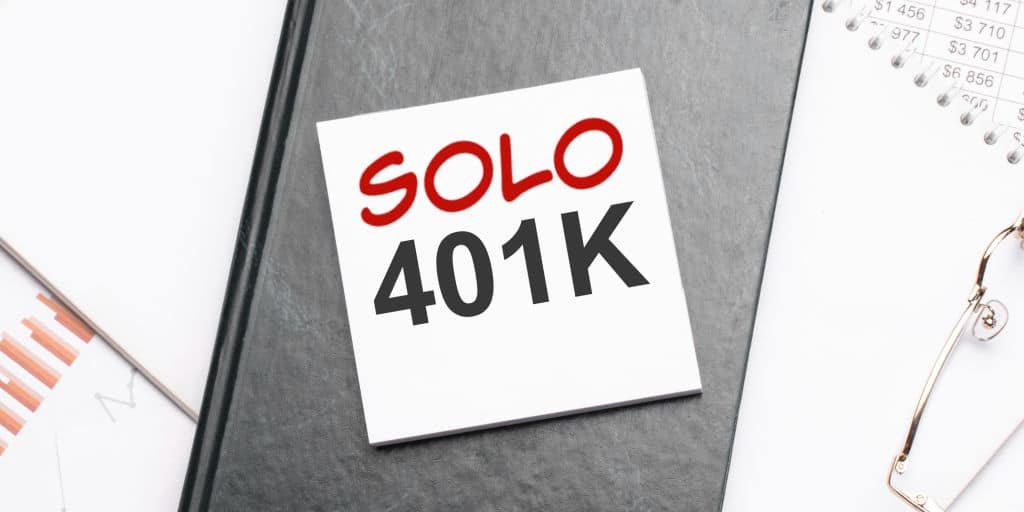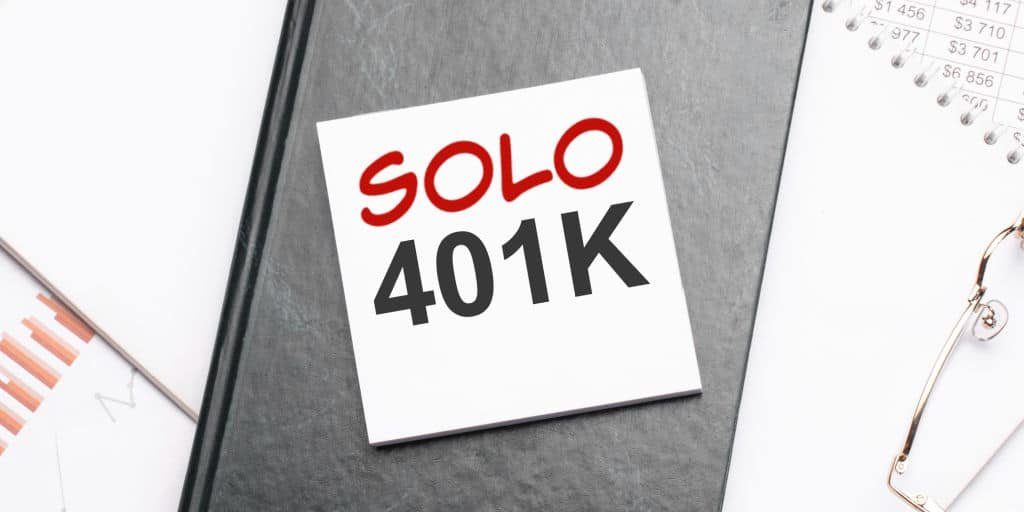It is important that each one Individuals have entry to some type of retirement financial savings account.
The federal government and IRS all the time must assist this entry as a result of Social Safety distributions usually are not meant to be the overall extent of 1’s retirement revenue.
For people employed by mid and large-size firms, investing for retirement is often out there to them by employer-sponsored retirement plans similar to a 401(Ok) or 403(b) financial savings possibility.
That raises the query, “What are the out there choices for the self-employed small enterprise proprietor?”
Really, the U.S. Authorities, by the IRS, has made a number of retirement financial savings choices out there to these with self-employment revenue.
Two choices are the Solo 401(okay) and a Simplified Worker Pension IRA (SEP-IRA).
Whereas each of those choices have a considerable following amongst American small enterprise house owners, the Solo 401(okay) benefits have made it a bit extra well-liked.
With that in thoughts, the next dialogue will give attention to the Solo 401(okay) retirement financial savings plan and the way it works.
What’s a Solo 401k?

The Solo 401(okay) can be known as a person 401(okay), one-participant 401(okay) plan, self-employed 401(okay), or i401(okay).
It is meant to function a retirement plan possibility for sole proprietors, freelancers, a one-member restricted legal responsibility firm (LLC), and different self-employed people with no workers or for entrepreneurs who make use of solely their spouses.
With a person 401(okay), you may spend money on belongings similar to shares, bonds, mutual funds, index funds, and exchange-traded funds.
And with a self-directed solo 401(okay), you’ve different funding decisions, similar to actual property, cryptocurrency, peer-to-peer lending, and treasured metals.
Not like the SEP-IRA possibility, the Solo 401(okay) for self-employed people acts very like an employer-sponsored 401(okay) in that it permits for contributions from each the worker and the employer.
In fact, the worker and the employer are the identical individuals in a enterprise {that a} self-employed particular person runs.
The purpose is the Solo 401(okay) possibility permits for the next degree of contributions due to this worker/employer contribution provision. This implies you may shelter worker earnings and enterprise revenue from taxes.
How It Works: Solo 401(okay) Contributions
It is vital to re-stress that the Solo 401(okay) permits for contributions from each the worker and the employer, acknowledging that each persons are the identical particular person, the self-employed enterprise proprietor (aside from an employed partner).
On the worker degree, the participant can contribute as much as 100% of their “earned revenue” or internet revenue to the plan. Nonetheless, there’s a statutory cap on worker contributions every year, and in 2022, that cap sits at $20,500.
Contributors over 50 are permitted to contribute as much as an extra $6,500 as a catch-up contribution.
A partner who works for you and earns compensation additionally has the identical worker contribution restrict.
On the employer degree, the annual profit-sharing contribution is about at as much as 25% of the worker’s earned revenue or $40,500.
Between the mixed worker and employer quantities, the utmost contribution any participant could make is $61,000 in 2022, plus any portion of the $6,500 quantity associated to the over 50 catch-up provisions.
All contributions are often made out of pre-tax earnings (see Roth possibility beneath), making the contributions tax-deferred.
In different phrases, the participant won’t must pay taxes on the revenue they contribute till these monies are taken as distributions.
Observe: Contributions may be made at any time throughout the tax yr, together with going into the following yr till the person recordsdata their tax return.
How It Works: Solo 401(okay) Distributions and Withdrawals
As with a SEP IRA, members can withdraw from their Solo 401(okay) account at any time.
But, any distributions taken earlier than the participant hits the age of 59 1/2 are topic to a ten% withdrawal penalty along with revenue tax cost on the distribution quantity.
The tax charge for distributions is all the time the participant’s particular person federal revenue tax charge for the yr or years they’re taking distributions.
If, by probability, a participant must make a hardship withdrawal from their Solo 401(okay) earlier than the age of 59 1/2, there are circumstances underneath which the IRS will waive the ten% penalty provision.
These circumstances embrace:
- Having to pay a tax levy from the IRS
- To cowl schooling prices for both the participant or a toddler
- For the acquisition of a main residence (restricted distribution)
- Some emergency medical prices
- If the participant turns into disabled or unable to work (closing of the enterprise)
Earlier than the age of 72 (70 ½ when you reached that age earlier than January 1, 2020), members usually are not required to take any distributions. After that age, members should begin taking distributions (RMDs) to keep away from a ten% penalty.
The IRS offers a calculation to find out the quantity the participant might want to begin taking in annual distributions over the age of 72.
Lastly, the IRS does allow members to borrow from their Solo 401(okay) accounts. The borrowing restrict is about on the lesser of fifty% of the plan’s internet worth, or $50,000.
The mortgage phrases can be set at 5 years until the mortgage was taken to buy a main residence. In that case, the participant would get a full 30 years to repay the mortgage.
Curiosity is charged on Solo 401(okay) loans, however the participant is just required to pay the curiosity immediately into their Solo 401(okay) account.
The relevant charge shall be decided when the mortgage is taken. Any quantities not paid again on time can be handled as distributions and topic to relevant penalties and revenue taxes.
Varieties of Solo 401(okay) Accounts
Potential Solo 401(okay) members can select between considered one of two sorts of accounts. One is the Conventional Solo 401(okay), and the opposite is the Roth Solo 401(okay).
What differentiates these two choices is how the participant’s tax legal responsibility shall be dealt with.
Conventional Solo 401(okay)
The Conventional possibility follows the method described beforehand.
The contributions are made with tax-deferred revenue, subsequently, lowering your taxable revenue. Taxes are paid sooner or later when distributions are taken.
Roth Solo 401(okay)
The Roth possibility requires that contributions be made out of monies already taxed.
With this feature, there is no tax legal responsibility when “tax-free” distributions are taken. The good benefit of the Roth possibility is all funding earnings are additionally “tax-free.”
Advantages Derived From Selecting the Solo 401(okay) Possibility
As we talked about above, the Solo 401(okay) possibility is far most popular by self-employed individuals due to its benefits.
These advantages embrace:
- Deferring taxes on conventional contributions till the cash is taken as a distribution
- Beneficiant contribution limits
- Contributions may be made by the worker and employer (employer profit-sharing contributions)
- Roth Solo 401(okay) possibility permits for “tax-free” funding earnings
Which is healthier – a Solo 401k or a SEP IRA?
For you, this resolution would boil down as to if or not your small business has substantial earnings.
In case your annual mixed contributions exceed the statutory contribution degree set by the IRS, both of those choices can be okay as a result of most options are the identical.
In case your annual contribution constantly falls beneath the IRS contribution restrict, the Solo 401(okay) can be a more sensible choice.
Why?
The worker/employer provision related to the Solo 401(okay) possibility would assist you to contribute extra every year. The Sep IRA solely permits worker contributions.
If and while you’re able to open your personal particular person 401(okay) retirement financial savings account and reap the tax benefits, it’s possible you’ll accomplish that by a financial institution, retail brokerage account, or on-line funding account.
















